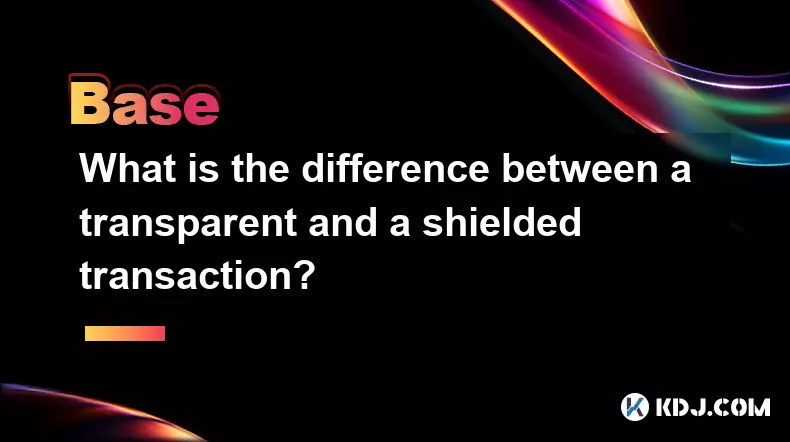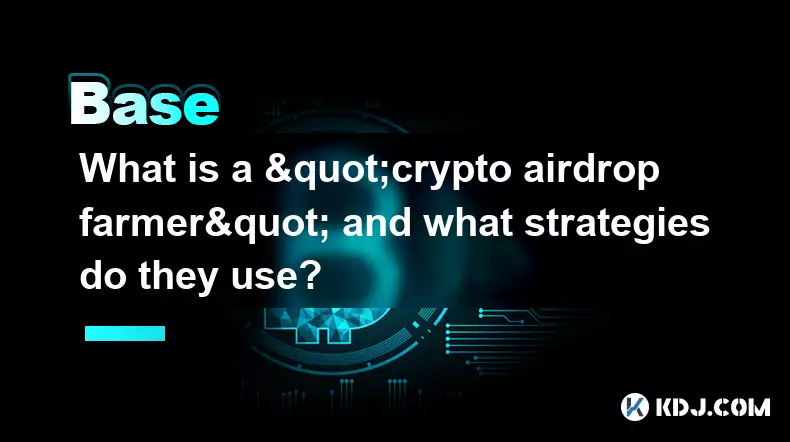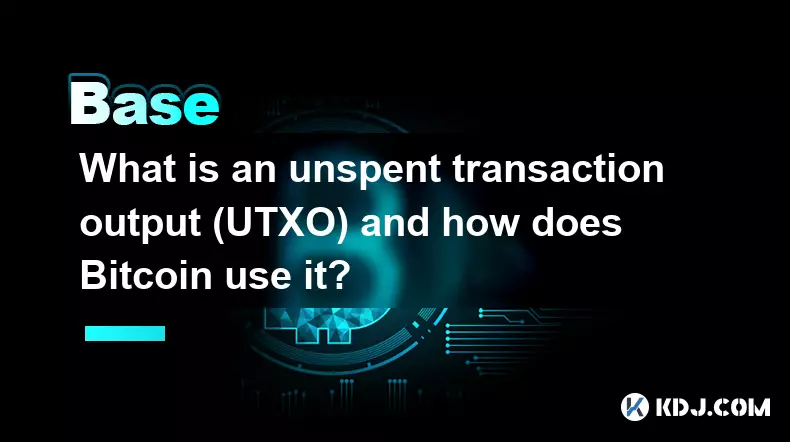-
 bitcoin
bitcoin $95122.959084 USD
-0.06% -
 ethereum
ethereum $3142.532402 USD
-0.28% -
 tether
tether $0.999439 USD
0.01% -
 xrp
xrp $2.209207 USD
-2.80% -
 bnb
bnb $925.395975 USD
0.07% -
 solana
solana $138.662599 USD
-1.73% -
 usd-coin
usd-coin $0.999753 USD
-0.02% -
 tron
tron $0.294100 USD
0.03% -
 dogecoin
dogecoin $0.161321 USD
0.35% -
 cardano
cardano $0.498672 USD
-1.53% -
 hyperliquid
hyperliquid $38.406659 USD
1.34% -
 zcash
zcash $679.663571 USD
5.44% -
 bitcoin-cash
bitcoin-cash $501.381807 USD
3.53% -
 chainlink
chainlink $13.975571 USD
-0.64% -
 unus-sed-leo
unus-sed-leo $9.166130 USD
-0.37%
What are gasless transactions?
Gasless transactions let users interact with blockchain apps without paying gas fees, as third parties or dApps cover the cost through meta-transactions and relayers.
Jul 03, 2025 at 07:15 pm

Understanding the Concept of Gasless Transactions
In the world of blockchain and cryptocurrencies, gas fees are a critical component that users must pay to execute transactions or smart contract interactions on networks like Ethereum. However, gasless transactions refer to operations where users do not bear the cost of gas fees directly. Instead, these fees are covered by third parties or alternative mechanisms embedded within decentralized applications (dApps) or protocols.
This model is particularly appealing for improving user experience, especially for newcomers who may find paying gas in native tokens cumbersome. It enables seamless interaction with blockchain platforms without requiring prior token balances for transaction fees.
How Gasless Transactions Work
Gasless transactions typically operate using meta-transactions, which act as intermediaries between the user and the blockchain network. In this setup:
- The user signs a transaction without sending it directly to the blockchain.
- A relayer or service provider takes the signed transaction and submits it to the network.
- The relayer pays the gas fee on behalf of the user.
- Smart contracts verify the authenticity of the transaction before execution.
This mechanism ensures that the end-user doesn’t need to hold any native cryptocurrency, such as ETH, to interact with dApps or perform token transfers.
Implementation via Biconomy and Other Middleware Services
One of the most prominent enablers of gasless transactions is Biconomy, a middleware infrastructure provider that simplifies blockchain interactions. Biconomy facilitates meta-transactions by:
- Offering gas abstraction layers that decouple gas payment from the user.
- Providing transaction relayers that submit transactions on behalf of users.
- Supporting customizable gas models, allowing developers to sponsor gas fees for their users.
Developers integrate Biconomy’s SDK into their dApp, enabling features like:
- User-friendly onboarding without requiring wallet top-ups.
- Batched transactions to reduce overall gas costs.
- Gas sponsorship programs where project teams cover transaction fees to enhance adoption.
This integration allows users to transact using stablecoins or other ERC-20 tokens while the backend handles gas payments in ETH automatically.
Role of Smart Contracts in Gasless Transactions
At the heart of gasless transactions lies the smart contract architecture designed to accept and validate meta-transactions. These contracts implement specific functions to:
- Verify the signature of the original transaction.
- Execute the intended action once validated.
- Reimburse the relayer or sponsor for covering the gas cost.
To achieve this, developers often use standards like EIP-2771, which provides guidelines for receiving and processing forwarded calls. This standard helps distinguish between the actual sender and the entity submitting the transaction.
Key components in this process include:
- Forwarder contracts that handle meta-transactions.
- Trusted relayers that forward signed data to the blockchain.
- Signature verification logic to prevent unauthorized execution.
These smart contract capabilities make it possible to build decentralized systems where users can engage without upfront crypto holdings.
Use Cases and Applications of Gasless Transactions
Gasless transactions have found practical applications across various domains within the blockchain ecosystem:
- Gaming platforms: Players can interact with games without worrying about gas fees, enhancing immersion and engagement.
- Decentralized finance (DeFi): Users can swap tokens or provide liquidity without needing to hold native chain assets.
- Non-fungible token (NFT) marketplaces: Buyers and sellers can trade NFTs seamlessly, increasing accessibility.
- Web3 identity solutions: Simplified sign-in and credential management without requiring gas for every action.
Projects like Gitcoin Passport, Polygon ID, and ZKSync Era have adopted or explored gasless models to improve usability and inclusivity.
Frequently Asked Questions (FAQ)
Q1: Can gasless transactions be used on any blockchain?While initially popularized on Ethereum, gasless transactions can be implemented on any EVM-compatible blockchain that supports custom smart contract logic and relayer services.
Q2: Who covers the cost of gas in a gasless transaction?Typically, project developers, dApp operators, or sponsors pay the gas fees. Some platforms also use revenue-sharing models or protocol fees to sustain gas coverage.
Q3: Are gasless transactions secure?Yes, they maintain the same level of security as traditional blockchain transactions. The use of digital signatures and trusted relayers ensures that only authorized actions are executed.
Q4: Is there a limit to how many gasless transactions a user can perform?Limits depend on the platform's implementation. Some applications impose rate limits or usage caps, while others allow unlimited usage under sponsored programs.
Disclaimer:info@kdj.com
The information provided is not trading advice. kdj.com does not assume any responsibility for any investments made based on the information provided in this article. Cryptocurrencies are highly volatile and it is highly recommended that you invest with caution after thorough research!
If you believe that the content used on this website infringes your copyright, please contact us immediately (info@kdj.com) and we will delete it promptly.
- Holiday Cheer: An MTG Promo That Generates Infinite Combos and Tokens!
- 2025-11-17 06:35:01
- XRP ETFs & Franklin Templeton: Market Surge Signals Crypto's New Era
- 2025-11-17 05:00:01
- Decoding Tomarket's Daily Combo on November 16, 2025: Is It Worth the Hype?
- 2025-11-17 04:55:01
- XRP Price Check: $2.456 Resistance, ETF Inflows, and What's Next
- 2025-11-17 04:55:01
- Navigating SEI Retests: An Altcoin Accumulation Opportunity in a Choppy Market
- 2025-11-17 04:50:02
- Decoding the Beetz Daily Combo Craze: Token Rewards in November 2025
- 2025-11-17 04:50:02
Related knowledge

What is the difference between a transparent and a shielded transaction?
Nov 10,2025 at 05:59pm
Understanding Transparent Transactions in Cryptocurrency1. Transparent transactions are the standard form of transaction on most public blockchains li...

What is a "crypto airdrop farmer" and what strategies do they use?
Nov 09,2025 at 03:39pm
What Is a Crypto Airdrop Farmer?1. A crypto airdrop farmer is an individual who actively participates in blockchain projects to qualify for free token...

What is an unspent transaction output (UTXO) and how does Bitcoin use it?
Nov 12,2025 at 01:40am
Understanding the Concept of Unspent Transaction Output (UTXO)1. An Unspent Transaction Output, commonly referred to as UTXO, is a fundamental compone...

What is a "governance attack" and how can a DAO be compromised?
Nov 14,2025 at 05:59am
Understanding Governance Attacks in Decentralized Autonomous Organizations1. A governance attack occurs when an individual or group gains disproportio...

How do you track a crypto portfolio across multiple wallets and chains?
Nov 12,2025 at 04:19pm
The Evolution of Decentralized Exchanges in the Crypto Ecosystem1. Decentralized exchanges (DEXs) have transformed how users trade digital assets by r...

What is a "rug pull" clause in a smart contract and how can you spot it?
Nov 14,2025 at 11:40pm
Understanding the Concept of a Rug Pull in Decentralized Finance1. A rug pull refers to a malicious act in the cryptocurrency space where developers a...

What is the difference between a transparent and a shielded transaction?
Nov 10,2025 at 05:59pm
Understanding Transparent Transactions in Cryptocurrency1. Transparent transactions are the standard form of transaction on most public blockchains li...

What is a "crypto airdrop farmer" and what strategies do they use?
Nov 09,2025 at 03:39pm
What Is a Crypto Airdrop Farmer?1. A crypto airdrop farmer is an individual who actively participates in blockchain projects to qualify for free token...

What is an unspent transaction output (UTXO) and how does Bitcoin use it?
Nov 12,2025 at 01:40am
Understanding the Concept of Unspent Transaction Output (UTXO)1. An Unspent Transaction Output, commonly referred to as UTXO, is a fundamental compone...

What is a "governance attack" and how can a DAO be compromised?
Nov 14,2025 at 05:59am
Understanding Governance Attacks in Decentralized Autonomous Organizations1. A governance attack occurs when an individual or group gains disproportio...

How do you track a crypto portfolio across multiple wallets and chains?
Nov 12,2025 at 04:19pm
The Evolution of Decentralized Exchanges in the Crypto Ecosystem1. Decentralized exchanges (DEXs) have transformed how users trade digital assets by r...

What is a "rug pull" clause in a smart contract and how can you spot it?
Nov 14,2025 at 11:40pm
Understanding the Concept of a Rug Pull in Decentralized Finance1. A rug pull refers to a malicious act in the cryptocurrency space where developers a...
See all articles

























![Coin Master Hack Spins 2025 ✅ Coin Master Free Spins[ Android _ iOS ] [LINK IN COMMENT] Coin Master Hack Spins 2025 ✅ Coin Master Free Spins[ Android _ iOS ] [LINK IN COMMENT]](/uploads/2025/11/16/cryptocurrencies-news/videos/6919c627821e7_image_120_90.webp)
















































